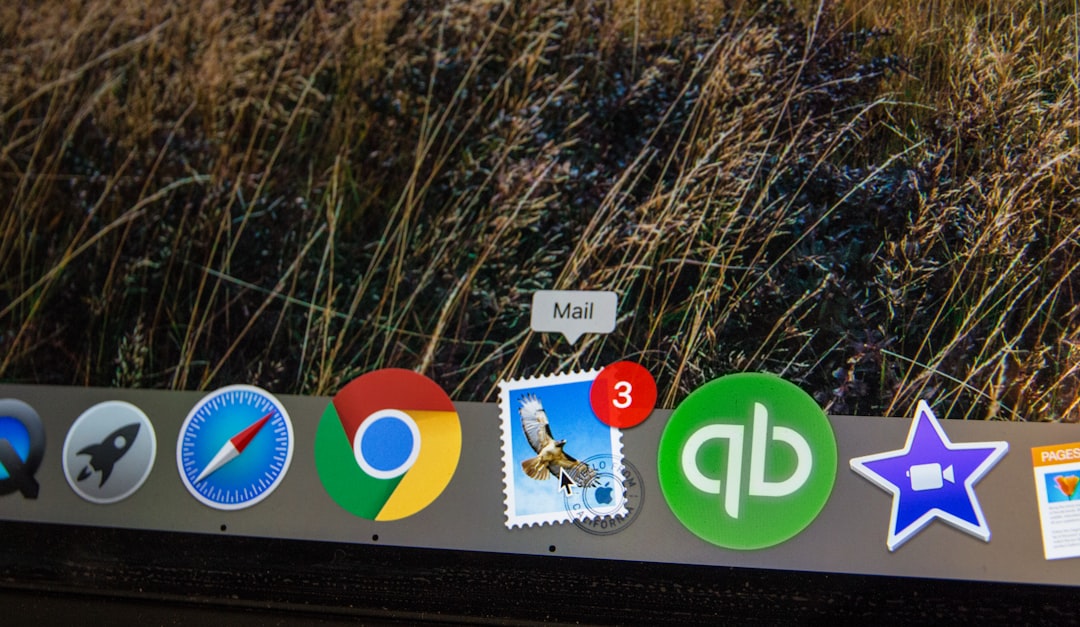Table of Contents
- Introduction
- Assessing sender reputation and domain health
- Analyzing email content for spam triggers
- Reviewing recipient engagement metrics
- Investigating email authentication settings
- Evaluating email list hygiene and management
- Checking email server configurations
- Monitoring ISP feedback and blacklists
- Testing email deliverability with different providers
- Conclusion
- Frequently Asked Questions
Introduction
Imagine this: you craft the perfect email campaign. The content is engaging, the subject line is eye-catching, and you hit send, awaiting a surge in responses. But then, silence. Your once-promising emails have mysteriously vanished into the void, never to grace the inboxes of your intended audience. Sound familiar? You’re not alone.
Email deliverability is the hidden gatekeeper of successful email marketing. It determines whether your meticulously crafted messages reach their destination or are lost in the oblivion of spam folders. And in today’s digital age, understanding and mastering email deliverability is more crucial than ever.
In this article, we’ll walk you through the intricacies of email deliverability, uncovering secrets that will empower you to troubleshoot like a pro. Together, we’ll embark on a journey to ensure your messages always land right where they belong—in your readers’ primary inboxes.
But before we dive deeper, here’s a quick glance at some crucial factors that influence email deliverability:
| Factor | Impact on Deliverability |
|---|---|
| Sender Reputation | Affects email placement in inbox or spam |
| Content Quality | Determines engagement and relevance |
| Authentication Protocols | Ensures trustworthiness of the sender |
Buckle up, as we unlock these mysteries and set you on the path to email marketing success!
Assessing sender reputation and domain health
Assessing sender reputation and domain health is a vital step in troubleshooting email deliverability issues. The sender reputation is like a report card for your email sending practices and can significantly impact whether your emails reach the inbox or are marked as spam. Start by checking your sender score, which is a numerical representation of your reputation. A low score may indicate potential deliverability problems.
Next, ensure that your domain health is optimal. This includes reviewing your domain’s DNS settings, such as SPF, DKIM, and DMARC configurations, to make sure they are correctly set. These authentication protocols are essential in verifying that your emails are legitimate and not spoofed.
Monitoring feedback loops with major ISPs can also provide insights into how recipients perceive your emails, helping identify if your messages are frequently marked as spam. Tools like Google Postmaster and Microsoft SNDS can offer detailed reports on domain-based delivery metrics and sender quality indicators.
Finally, review your sending practices. Ensure that you’re only contacting recipients who have opted in to receive your emails, regularly clean your mailing list, and avoid sending emails with spammy content. Consistent monitoring and optimization of these components will aid in maintaining a strong sender reputation and healthy domain.
Analyzing email content for spam triggers
One critical aspect of troubleshooting email deliverability is analyzing email content for spam triggers. Spam triggers are specific words, phrases, or formatting that can lead to an email being flagged as spam by email service providers. A thorough analysis begins with assessing the subject line for overused or hyperbolic words such as “free,” “winner,” or “guaranteed,” which can set off spam alarms.
Within the body of the email, it’s essential to ensure the content maintains a professional tone and avoids excessive use of exclamation marks or capitalization, which can appear as shouting and raise spam flags. Including too many links or large attachments might also be misconstrued as spammy behavior.
Furthermore, the email’s HTML code should be clean and minimal, avoiding unnecessary tags or broken links, as these can affect deliverability. It’s advisable to test the email through spam-checking tools before sending it out to ensure its compliance with the standards set by various spam filters. By carefully evaluating these elements, the risk of emails being misclassified as spam can be significantly reduced, ensuring better deliverability and engagement rates.
Reviewing recipient engagement metrics
When tackling email deliverability challenges, reviewing recipient engagement metrics is crucial. These metrics provide valuable insight into how your audience interacts with your emails, which can significantly impact your overall deliverability rates. Key metrics to consider include open rates, click-through rates, bounce rates, and unsubscribe rates. Monitoring these figures helps identify patterns that may indicate engagement issues.
High open and click-through rates often suggest that your content is resonating well with recipients. In contrast, high bounce or unsubscribe rates may signal that your emails are missing the mark. It’s essential to regularly evaluate these metrics to ensure your email campaigns are effective and engaging. Additionally, segmenting your audience based on engagement levels allows for more targeted and personalized communication, which can improve interaction.
Analyzing recipient engagement not only aids in troubleshooting deliverability issues but also helps in refining your email strategy. By understanding what works and what doesn’t, you can make data-driven decisions that enhance both the reach and impact of your communications, ultimately leading to better deliverability and stronger relationships with your audience.
Investigating email authentication settings
Investigating email authentication settings is crucial in ensuring optimal email deliverability. Email authentication involves verifying that an email message actually comes from the sender it claims to come from. This process helps to protect against email spoofing and phishing attacks. To start troubleshooting, one should first check the Sender Policy Framework (SPF) records, which specify which mail servers are allowed to send emails on behalf of your domain. Ensuring that SPF records are correctly configured can prevent legitimate emails from being marked as spam.
Another key element is DomainKeys Identified Mail (DKIM), which adds a digital signature to each email, allowing the recipient’s server to verify the authenticity of the sender. Make sure that DKIM is properly set up and aligned with your domain’s DNS settings.
Finally, Domain-based Message Authentication, Reporting, and Conformance (DMARC) is essential for monitoring and instructing email receivers on handling potential phishing or spoofing attempts. By configuring DMARC records, you can get reports about how your emails are being handled and improve their reach. Regularly reviewing and adjusting these authentication settings can significantly enhance email deliverability and protect your domain reputation.
Evaluating email list hygiene and management
Evaluating email list hygiene and management is a critical step in addressing email deliverability challenges. An email list that has not been maintained properly can lead to high bounce rates, spam complaints, and reduced sender reputation, ultimately affecting the success of your campaigns. The first step in maintaining list hygiene is to regularly clean your list by removing inactive, invalid, or duplicate email addresses. This can be done using specialized software that verifies and validates email addresses to ensure they are accurate and deliverable.
In addition to regular cleaning, segmenting your email list based on user behavior and engagement can significantly improve deliverability. By targeting specific segments with relevant content, you can increase open rates and reduce the chances of emails being marked as spam. Monitoring engagement metrics such as open rates and click-through rates can help you identify and remove unengaged subscribers who are not interacting with your emails.
Furthermore, employing a confirmed opt-in process, where users verify their subscription before being added to the list, can minimize the risk of adding false or erroneous addresses. Implementing these practices not only enhances delivery rates but also strengthens relationships with your subscribers, leading to more successful email marketing outcomes.
Checking email server configurations
When dealing with email deliverability challenges, checking your email server configurations is a crucial first step. Proper configuration ensures that emails are sent reliably and securely, minimizing the risk of them being marked as spam. Start by verifying the DNS settings, including the SPF, DKIM, and DMARC records. These authentication mechanisms confirm that your emails are legitimate and reduce the likelihood of them being flagged.
Next, ensure that the email server’s IP address is not blacklisted. Routine monitoring of IP reputation can help you proactively address any issues that might arise. Additionally, check the server’s sending limits and throttling policies to ensure that you are not exceeding them, which can lead to emails being delayed or blocked.
Another important factor is the configuration of the SMTP server. It should be secure and have properly configured encryption protocols, such as TLS, to ensure data privacy and integrity during transmission. Lastly, review the server logs regularly for any unusual activity or error messages that might indicate underlying issues. These steps help in maintaining optimal email deliverability rates and building a positive sender reputation.
Monitoring ISP feedback and blacklists
Monitoring ISP feedback and blacklists is a crucial step in maintaining email deliverability. Internet Service Providers (ISPs) provide essential feedback loops that help identify issues with email campaigns. By signing up for these feedback loops, senders can receive notifications when an email is flagged as spam by recipients. This information is invaluable, as it allows for timely adjustments to email lists and content, reducing the chances of continued negative interactions.
Additionally, regularly monitoring blacklists is imperative. Blacklists are databases that identify IP addresses and domains known for sending spam. If an IP or domain ends up on a blacklist, it can significantly impact email deliverability rates. By checking blacklists regularly, businesses can identify potential problems early. If blacklisted, it is important to investigate the cause and follow the necessary steps to request removal. This could involve addressing any compliance issues, reaffirming consent from contacts, or even improving the overall content quality.
By strategically monitoring ISP feedback and blacklists, organizations can better protect their sender reputation, ensuring that their emails are delivered as intended and not caught in spam filters. Such proactive measures contribute significantly to maintaining effective email communication strategies.
Testing email deliverability with different providers
When testing email deliverability with different providers, a systematic approach is crucial. Begin by sending test emails to major providers like Gmail, Yahoo, and Outlook. Each platform may handle emails differently, so it’s essential to evaluate how your emails are received and displayed by each one. Pay attention to metrics like delivery time, inbox placement, and any potential spam folder occurrences. Additionally, assess how your content, such as images and links, is rendered across different platforms.
Utilize email testing tools that help analyze and improve deliverability. These tools can provide insights into potential issues such as blacklists or domain reputation problems. Check for authentication protocols like SPF, DKIM, and DMARC; these help in ensuring that your email is not only delivered but trusted by the receiving servers.
It’s also a good idea to send your emails to test accounts with varied engagement histories. This can mimic real-world scenarios where recipients may have different interactions with your previous emails.
By thoroughly testing and analyzing across multiple providers, you gain valuable insights that help refine your email strategy, thus enhancing overall deliverability and ensuring that your messages reach their intended recipients effectively.
Conclusion
In conclusion, mastering email deliverability entails a comprehensive strategy encompassing various crucial components. From assessing sender reputation and maintaining domain health to scrutinizing email content for potential spam triggers, each factor plays a pivotal role in ensuring your emails consistently reach the inbox. Dive into recipient engagement metrics, as they provide valuable insights into the effectiveness of your campaigns and help in tailoring more personalized communications.
Additionally, don’t overlook the importance of robust email authentication settings and maintaining a clean email list. These not only enhance deliverability but also shield your domain from detrimental attacks. Furthermore, regularly checking email server configurations and monitoring ISP feedback and blacklists can help in swiftly combating issues that arise.
Finally, by routinely testing email deliverability across various providers, you gather insights necessary for refining your strategy and ensuring optimal performance. Incorporating these best practices leads to a more reliable and effective email communication strategy, ultimately fostering stronger relationships with your audience and never missing an inbox again!

















